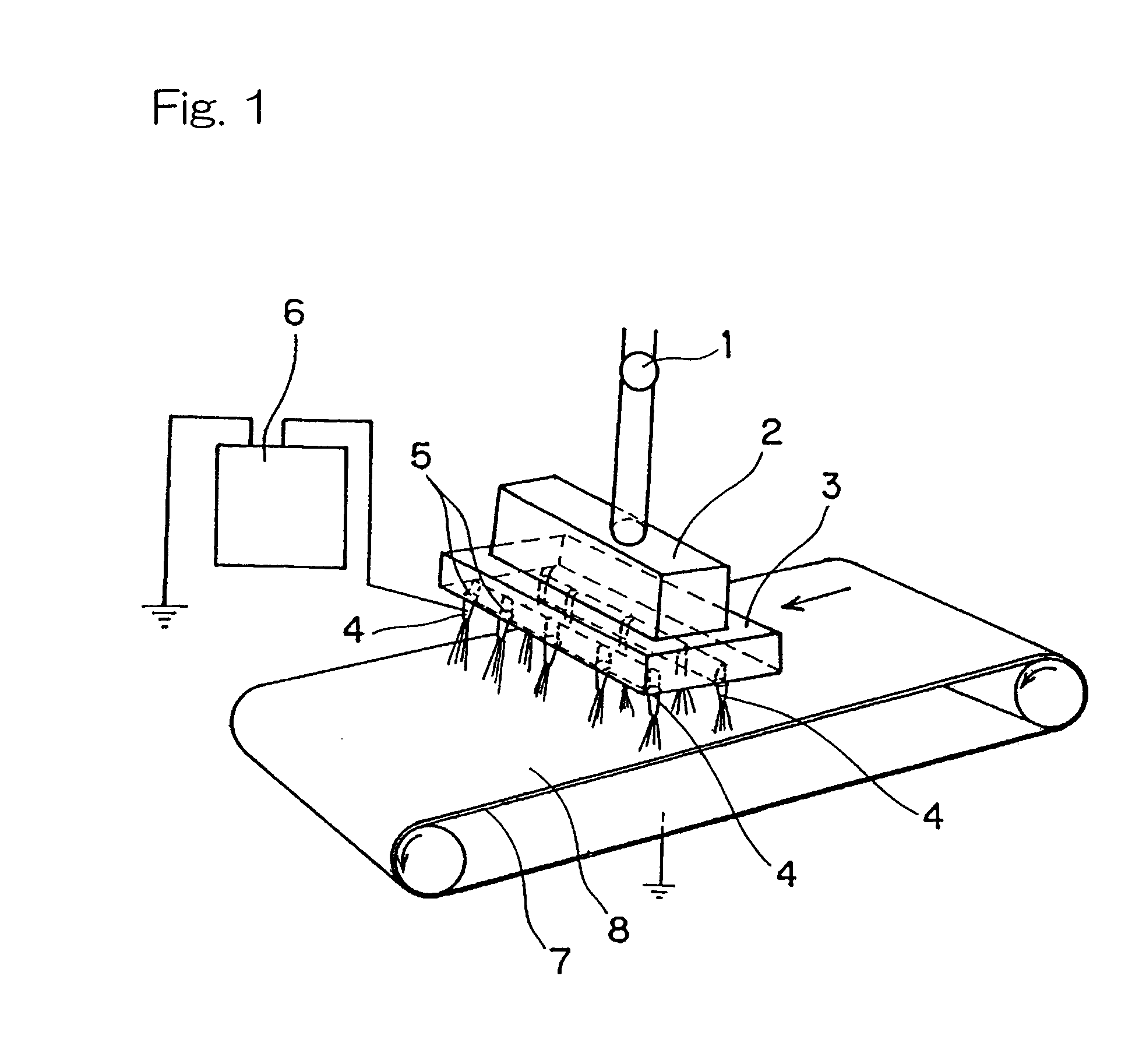Separator for non-aqueous batteries, non-aqueous battery using same, and production method for separator for non-aqueous batteries
- Summary
- Abstract
- Description
- Claims
- Application Information
AI Technical Summary
Benefits of technology
Problems solved by technology
Method used
Image
Examples
example 1
[0127](1) Production of Heat Resistant Polymer Fiber Layer (B)
[0128]Organic solvent-spun rayon fibers (“Tencel” (trademark) manufactured by Courtaulds; 1.7 dtex×3 mm) were beaten with a pulper and a fiberizer to be a fibrillated material having a CSF value of 0 mL. A slurry was prepared by using the above fibrillated material as a matrix fiber and ethylene-vinyl alcohol fibers (“S030” manufactured by Kuraray Co., Ltd.) as a binder fiber at a mass ratio of (matrix fiber):(binder fiber)=80:20.
[0129]Paper making of this slurry was carried out with a cylinder paper machine, then the resultant was dried with a dryer at a temperature of 130° C. to produce a heat-resistant polymer fiber layer with a basis weight of 10.9 g / m2 and a thickness of 15 μm.
[0130](2) Production of Low Melting-Point Polymer Fiber Layer (A)
[0131]Ethylene-vinyl alcohol copolymer (EVOH: “EVAL-G” manufactured by Kuraray Co., Ltd.) was added into DMSO solvent to dissolve in a still-standing state at a temperature of 25°...
example 2
[0134]Except for using polypropylene as a low melting-point polymer fiber layer instead of the ethylene-vinyl alcohol copolymer of Example 1, a separator was produced in the same way with Example 1.
[0135]More specifically, the polypropylene (“B101” manufactured by Grand Polymer Co., Ltd.) was melt-kneaded at 300° C. with a twin-screw extruder to obtain a spinning liquid, then electro-spinning was carried out with the spinning machine of FIG. 1 type to produce low melting-point nanofibers.
[0136]The spinning machine comprises a needle having an inside diameter of 0.3 mm as the spinneret 4. The distance between the spinnerets 4 and the take-up device 7 was set to be 6 cm. The heat resistant polymer fiber layer obtained in the procedure of (1) of Example 1 was placed and wound up into the take-up device 7. Then, while moving the take-up device 7 at a conveyer speed of 0.1 m per minute, the spinning solution was extruded from the spinnerets 4 in a predetermined supply amount with applyin...
example 3
[0137]Except for using polyethylene (“5202B” manufactured by Mitsui Chemicals Inc.) instead of the low melting-point polymer of Example 2, a separator was produced in the same way with Example 2. The properties of thus obtained separator are shown in Table 1.
PUM
| Property | Measurement | Unit |
|---|---|---|
| Temperature | aaaaa | aaaaa |
| Temperature | aaaaa | aaaaa |
| Thickness | aaaaa | aaaaa |
Abstract
Description
Claims
Application Information
 Login to View More
Login to View More - R&D
- Intellectual Property
- Life Sciences
- Materials
- Tech Scout
- Unparalleled Data Quality
- Higher Quality Content
- 60% Fewer Hallucinations
Browse by: Latest US Patents, China's latest patents, Technical Efficacy Thesaurus, Application Domain, Technology Topic, Popular Technical Reports.
© 2025 PatSnap. All rights reserved.Legal|Privacy policy|Modern Slavery Act Transparency Statement|Sitemap|About US| Contact US: help@patsnap.com


